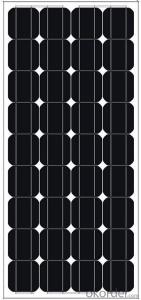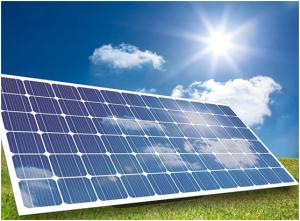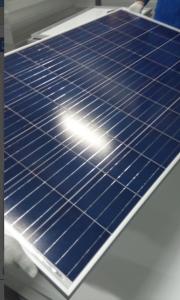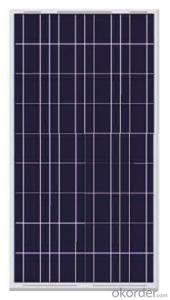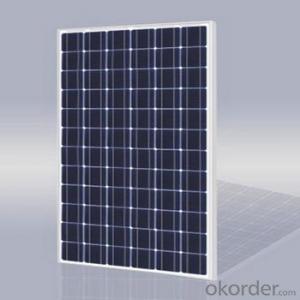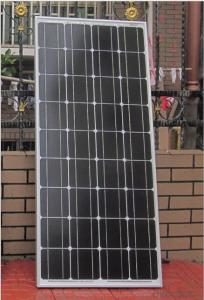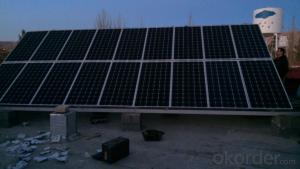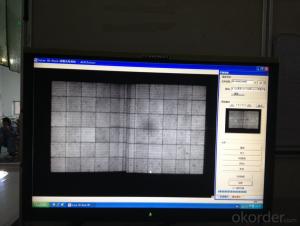Solar Panels for Low Income - Monocrystal Photovoltaic (PV) Panel 100W
- Loading Port:
- Shekou
- Payment Terms:
- TT or LC
- Min Order Qty:
- 2 watt
- Supply Capability:
- 5000 watt/month
OKorder Service Pledge
OKorder Financial Service
You Might Also Like
Structure of Product Description
What is the product?
CNBM Solar photovoltaic (PV) Panel is designed for large electrical power requirements. It is the optimal choice for both on-grid and off-grid power systems. CNBM Solar panel offers high performance of power per square foot of solar array. Monocrystalline silicon(c-Si): often made using the Czochralski process. Single-crystal wafer cells tend to be expensive, and because they are cut from cylindrical ingots, do not completely cover a square solar cell module without a substantial waste of refined silicon. Hence most c-Si panels have uncovered gaps at the four corners of the cells.
Characteristics of Solar Monocrystalline Series Panels
I Solar Cell : High efficiency crystalline solar cell. Even if under not a very strong light, the PV module can produce maximum power output.
II Tempered glass (toughened glass): Anti-reflecting coating and high transmission rate glass increase the power output and mechanical strength of solar module.
III EVA and TPT: Using high quality EVA and TPT to prevent destroying and water.
Standard Test Conditions of Solar Monocrystalline Series Panels
The opto-electrical specifications shown below are stabilized values being measured at Standard Test Conditions, Irradiance: 1000W/m2, Spectrum: AM1.5 at 25°C, The info below is subject to manufacturing tolerances. Where appropriate minutes of measurement are available and are used for the dimensioning of the installation.
Advantages of Solar Monocrystalline Series Panels
• CNBM Solar performance guarantees for 25 years
• Timeliness of delivery
CNBM International Corporation's products including Monocrystalline Solar Panel, Polycrystalline Solar Panel have received and enjoyed famous reputation in many countries and regions in the world .As a solar panel supplier in China, we strive to provide our customers with excellent service, superior products and unmatched value.
Characteristics of Solar Monocrystalline Series Panels
Max Power Voltage Vmp (V) | 18.4V | 17.6V |
Max Power Current Imp (A) | 6.52A | 7.39A |
Open Circuit Voltage Voc (V) | 23.0V | 22.2V |
Short Circuit Current Isc (A) | 6.97A | 7.90A |
Max Power Pm (W) | 120W | 130W |
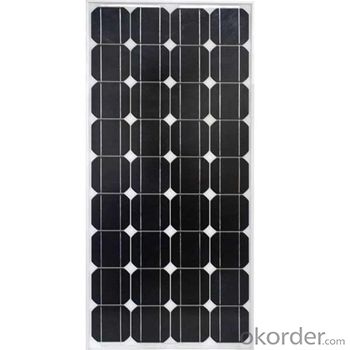
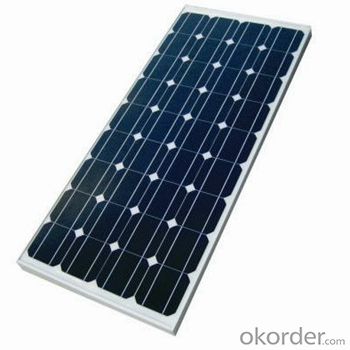
FAQ:
We have organized several common questions for our clients,may help you sincerely:
1. What’s price per watt?
A: It’s depends on the quantity, delivery date and payment terms of the order. We can talk further about the detail price issue. Our products is high quality with lower price level.
2. Can you tell me the parameter of your solar panels?
We have different series of cells with different power output, both from c-si to a-si. Please take our specification sheet for your reference.
3. How do you pack your products?
We have rich experience on how to pack the panels to make sure the safety on shipment when it arrives at the destination.
- Q: What is the warranty period for solar panels?
- The warranty period for solar panels typically ranges from 10 to 25 years, depending on the manufacturer and the type of panel.
- Q: How can solar panels be integrated into building designs?
- Solar panels can be integrated into building designs by incorporating them into the roof or facade of the building. This involves installing solar panels in a way that seamlessly blends with the architecture while maximizing exposure to sunlight. Additionally, solar panels can also be integrated into shading devices, windows, or canopies to generate electricity while providing additional functions such as shading or daylighting.
- Q: Can solar panels be installed on churches or religious institutions?
- Yes, solar panels can be installed on churches or religious institutions. In fact, many religious institutions are embracing renewable energy and installing solar panels on their roofs as a way to reduce their carbon footprint and contribute to a more sustainable future. Installing solar panels on churches not only helps them save money on energy bills but also sets an example for their congregations and communities by promoting clean and renewable energy sources.
- Q: When you add a load resistor to a PV panel (Solar panel) of 00 ohms what happens to the voltage produced from the cellAlso, as the resistance increases, how does this affect the output voltage
- Guide okorder /
- Q: I have tried researching on the internet and just cant find any real answer. I know that the amount of electricity produced when taking in the suns rays depends on the placement of the solar panels but I am just looking for ball park figures. Thanks
- Ultimately it depends on your utility and the country you're in. In countries like Germany, Spain and the UK, the utilities will pay a higher price for the power you produce then what they sell it to you at. Otherwise, in countries that don't have such arrangements, net metering is best where what you produce is discounted from the amount you buy per month therefore so long as you produce less than you use, you get the full retail rate, otherwise you may get only half the retail rate with some utilities. Obviously, the solar panels are rated and won't produce much more than the rated power, a 4 foot by 2 foot panel would usually be rated at 00 watts but in most situations will produce about 80 watts and would probably cost about $500 US installed. If you assume 8 hours of usable sunshine a day, 70% sunny days, a 25 year service life, monthly billing and 0 cents a kilo watt hour retail rate, you can expect at most a -.67% per annum return on your investment, that's a negative sign out front. Basically without any subsidies, you will lose money on the panel, sure you're get some money every month, about $.34 per month for that 00 watt panel but it won't make back it's money at at a rate of 0.0 per kwh. With subsidies it might be a good investment but it's still not a good deal without subsidies.
- Q: Can solar panels be damaged by hail or other weather conditions?
- Yes, solar panels can be damaged by hail or other severe weather conditions. Hailstones can cause cracks or dents on the surface of the panels, which can affect their efficiency or even render them inoperable. Other extreme weather conditions like high winds, heavy snow, or lightning strikes can also potentially cause damage to solar panels. However, it is important to note that modern solar panels are designed to withstand a certain level of weather-related stresses and are often tested for durability.
- Q: How to Compare Solar Panels? ?
- Each okorder / When comparing the cost of different solar panels, bear in mind the variation in return each panel can provide. More expensive solar panels may provide better value for money in the long run. Greater power out.
- Q: Can solar panels be used in agriculture?
- Yes, solar panels can be used in agriculture. They provide a renewable and clean source of energy that can power various agricultural activities such as irrigation systems, lighting, and machinery. Additionally, solar panels can be installed on agricultural buildings or unused land, allowing farmers to generate their own electricity and reduce their carbon footprint.
- Q: Can solar panels be used to power a skyscraper?
- Yes, solar panels can be used to power a skyscraper. Advanced solar technologies and efficient panel setups can generate significant amounts of electricity, making it feasible to meet some or all of a skyscraper's power needs. However, considering the high energy demands of skyscrapers, a combination of solar power with other renewable sources or grid connection is often employed to ensure a reliable and consistent power supply.
- Q: How does the size of a solar panel affect its performance?
- The size of a solar panel directly affects its performance as it determines the amount of sunlight it can capture and convert into electricity. Generally, larger solar panels have more surface area to absorb sunlight, resulting in higher power output. A larger panel can generate more electricity, making it more efficient and productive than a smaller one. Additionally, larger panels often have more individual solar cells, which further enhances their performance and efficiency.
Send your message to us
Solar Panels for Low Income - Monocrystal Photovoltaic (PV) Panel 100W
- Loading Port:
- Shekou
- Payment Terms:
- TT or LC
- Min Order Qty:
- 2 watt
- Supply Capability:
- 5000 watt/month
OKorder Service Pledge
OKorder Financial Service
Similar products
Hot products
Hot Searches
Related keywords
